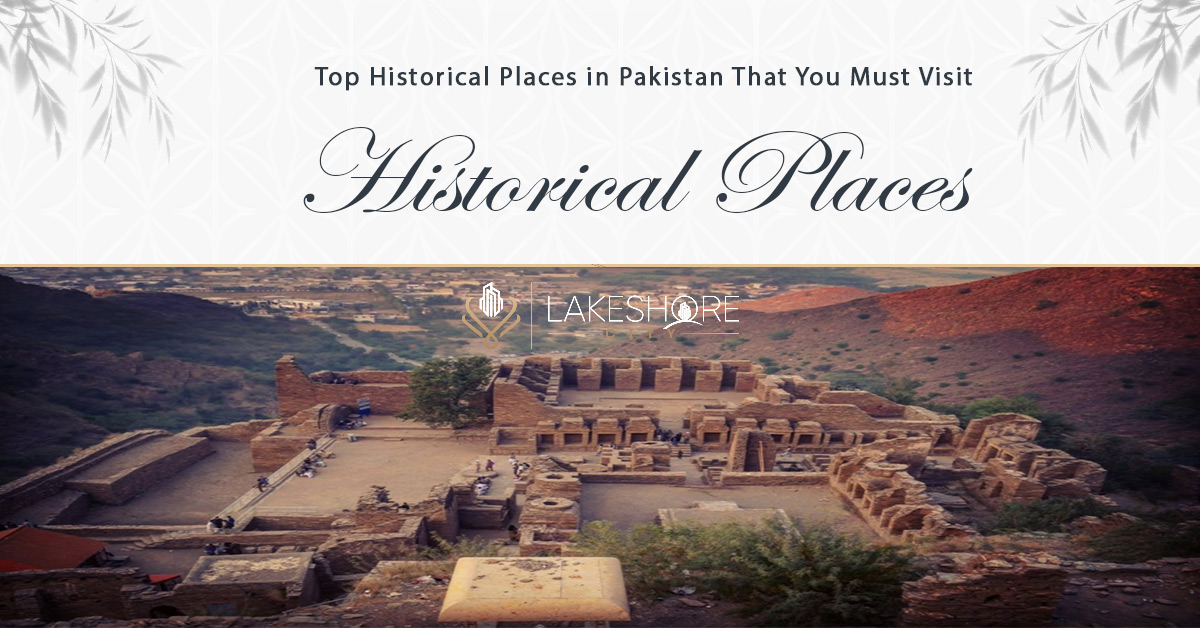Pakistan is a country rich in history and culture, and its many tourist attractions reflect this. Pakistan boasts a diverse landscape, with both verdant lowlands and towering mountain chains and deserts. In Pakistan, history buffs will find their dream destination. Several empires took turns ruling the country. During their travels, several renowned persons went through the country.
If you’re a history buff, you won’t want to miss this article about the best historical sites in Pakistan.
List of Historical Places in Pakistan
- Hiran Minar
- The Noor Mahal
- Mohenjo Daro
- Minar-e-Pakistan
- Taxila City
- Katas Raj Temples
- Harappa
- Lahore Fort
- Takht-i-Bahi
- Rohtas Fort
1. Hiran Minar
Hiran Minar is a complex in Sheikhupura dating back to the early Mughal Empire and was completed in the 17th century. It’s often referred to as “The Deer Tower.” Emperor Jahangir commissioned the structure to be erected in remembrance of his beloved pet antelope, Mansraj.
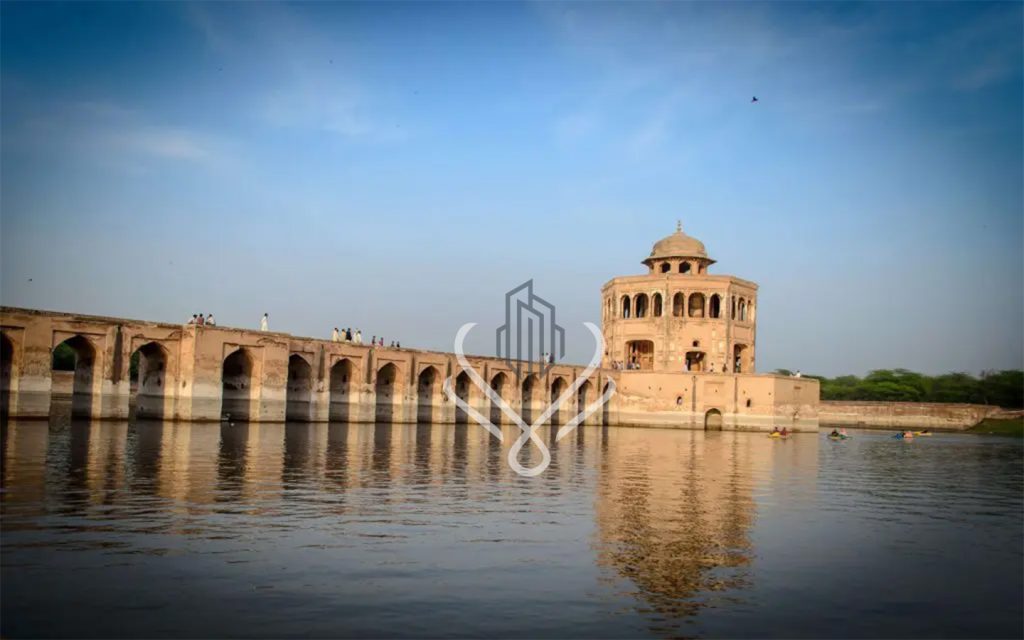
Towards the northwest of Lahore, in the city of Sheikhupura, is the Hiran Minar. The Sheikhupura Fort, likewise dating back to the early 17th century, may be seen in the vicinity of the Hiran Minar. The M2 Motorway connects Lahore to both locations.
The complex’s architecture is fascinating as well. Four 30-foot-tall minarets make up the structure. The complex’s beauty and elegance are enhanced by a large pool and a pavilion. Karachi has fantastic pools where you may cool off during the summer.
2. The Noor Mahal
The Noor Mahal, in the city of Bahawalpur, is a stunning example of Mughal architecture. During the time of the British Raj, the Nawab of Bahawalpur commissioned its construction in 1872. Gold coins and a city map were also buried in the mahal’s foundation.
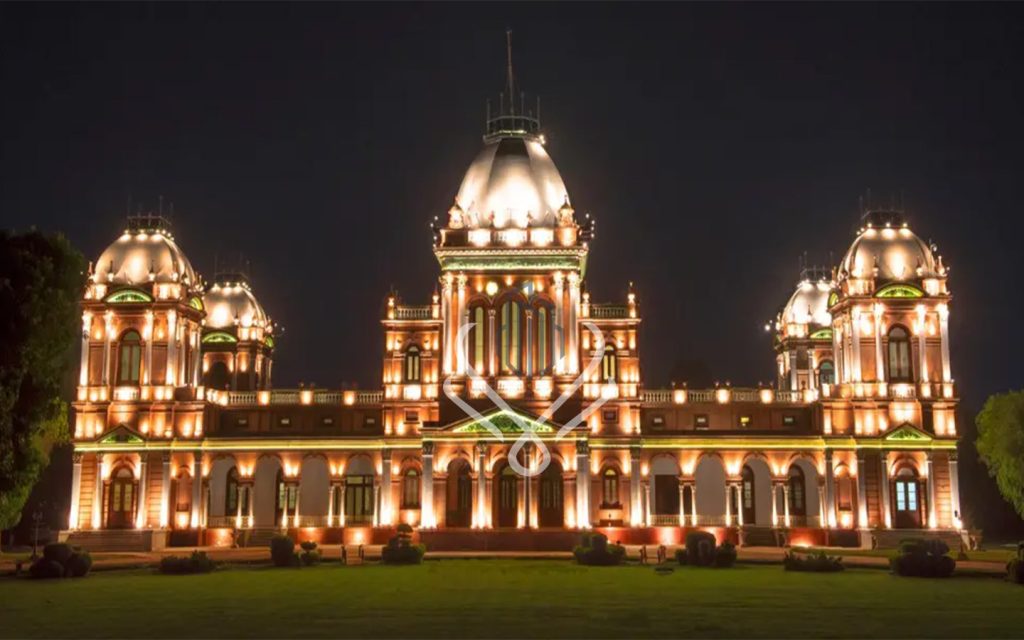
Even more so than the appearance, the mahal’s interior exudes class and refinement. The mahal’s stunning furnishings were largely sourced from European countries like England and Italy. It cost Rs. 1.2 million to construct the edifice, which was finished in 1875.
The mahal covers an area of around 4,140 square feet (44,600 square meters). It contains 32 rooms total, with 6 verandas and 5 domes, and 14 of the rooms are in the basement.
The sixth Nawab, Muhammad Bahawal Khan, spent Rs. 20,000 on a mosque for the palace in 1906.
The Government of Pakistan’s Department of Archeology designated the structure as a “protected monument” in September 2001, and it is now accessible to the public. The mahal is also home to several Nawab’s possessions, such as his collection of antique swords, a piano from the era when Nawabs played it, and several pieces of furniture and other artifacts from that era. A large wall is adorned with fictitious portraits of Nawabs.
3. Mohenjo Daro
Mohenjo Daro is an important archaeological site in Sindh. The name Mohenjo Daro means “Mound of the Dead Men.”
One of the largest and oldest settlements in the Indus Valley, Mohenjo Daro dates back to roughly 2500 BC. Unknown circumstances led to the city’s abandonment in the 19th century BCE. Major excavations have been carried out in the area since the city was unearthed in 1920.

In 1980, the city was included on the list of World Heritage Sites by UNESCO. Mohenjo-Daro lies in the Larkana District of Sindh, Pakistan, to the west of the Indus River. You should make it a vacation destination.
4. Minar-e-Pakistan
In Pakistan, the term “Minar-e-Pakistan” is synonymous with “nationalism” and “patriotism.” It is the city’s focal point and a national landmark. On this spot in 1940, the All-India Muslim League adopted the Lahore Resolution, and construction of the tower began in 1960 and continued through 1968.
The tower is an exquisite example of Islamic architecture attuned to modern aesthetics. Nasreddin Murat-Khan, a renowned architect who was born in Russia, designed it. Starting in 1960, the monument’s construction lasted until October 21, 1968, with an estimated cost of Rs 7,058,000.

At its lowest point, the tower is around 62 meters tall; the entire seminar stands about 70 meters tall. Large petals form at the minor’s base. The height of the petals is 9 meters. The tower is around 9.75 meters wide. Inscriptions on the petals display the text of the 9 April 1946 Delhi Resolution and the Urdu, Bengali, and English of the Lahore Resolution. The 13 Gates of Lahore, another important historical site in Pakistan, also cuts.
5. Taxila City
Near modern-day Rawalpindi is the ancient city of Taxila. In Sanskrit, Taxila translates to “City of Cut Stone.” It is around 20 miles north of Rawalpindi and 32 kilometers north of Islamabad, close to the Grand Trunk Road. Islamabad is home to both fascinating attractions and creepy locations. Rawalpindi is a city full of opportunities.
The Achaemenid Empire, the Mauryan Empire, the Indo-Greek, the Indo-Scythian, and the Kushan Empire all left their mark on the area, with some of the ruins dating back to the sixth century BCE. This highlights the rich cultural heritage and variety of the area.
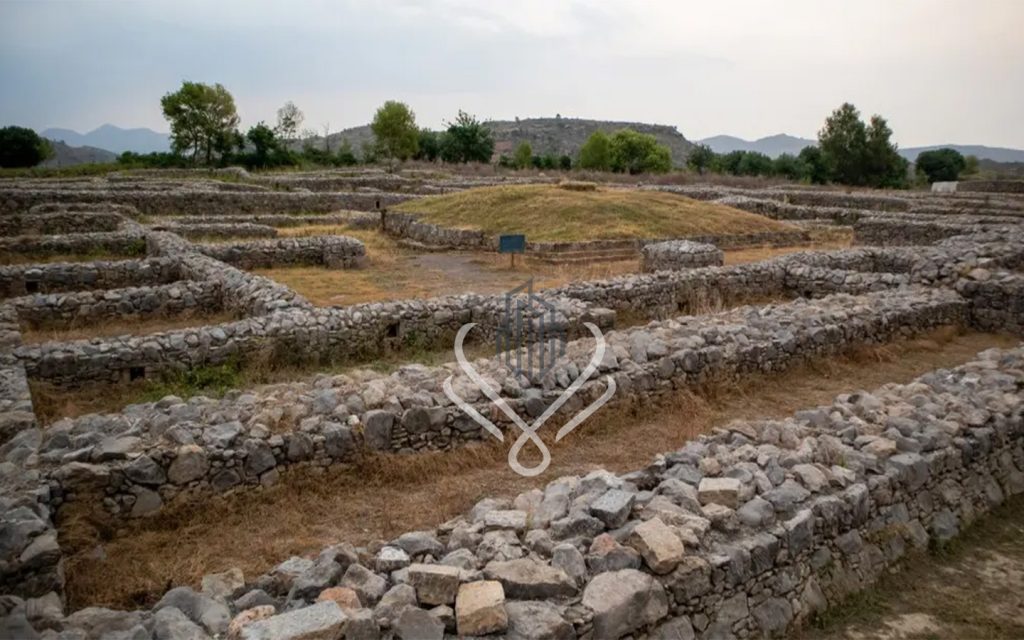
In the middle of the nineteenth century, the renowned archaeologist Sir Alexander Cunningham unearthed the city of Taxila. Taxila became a World Heritage Site by UNESCO in 1980, and in 2006, The Guardian newspaper named it the best place to visit in Pakistan.
6. Katas Raj Temples
If you like seeing historic Hindu sites like temples, you’ll love this city. Popular among the general public is the Katas Raj Temples. Katas is a collection of temples joined together by pedestrian bridges.
It’s about 2,000 feet above and situated close to Kallar Kahar. The Tilla Jogian complex, another significant Hindu pilgrimage site, is about 100 kilometers away by vehicle.

Katas, the pond that surrounds the compound, is holy to Hindus. Near Choa Saidan Shah, close to the M2 Motorway, you’ll find several temples. Legend has it that the complex’s pond was formed by Lord Shiva’s tears, shed in honor of his late wife, Sati.
The Hindu god Krishna is credited in another legend with constructing the temple and installing the shivling there. The pond is 20 feet deep at its deepest and covers an area of 2 canals and 15 marlas.
7. Harappa
About 24 kilometers (15 miles) to the west of Sahiwal is the archaeological site of Harappa in Punjab. Villagers who lived on the riverbank of Ravi Bank gave the area its name. It’s a must-see if you’re traveling through Pakistan. Harappa, the modern village, is located less than one kilometer (0.62 miles) from the original site.
There are artifacts in the remains that date back to the Bronze Age. The population is approximately 23,500, while the area occupied by the city is approximately 150 hectares (370 acres).
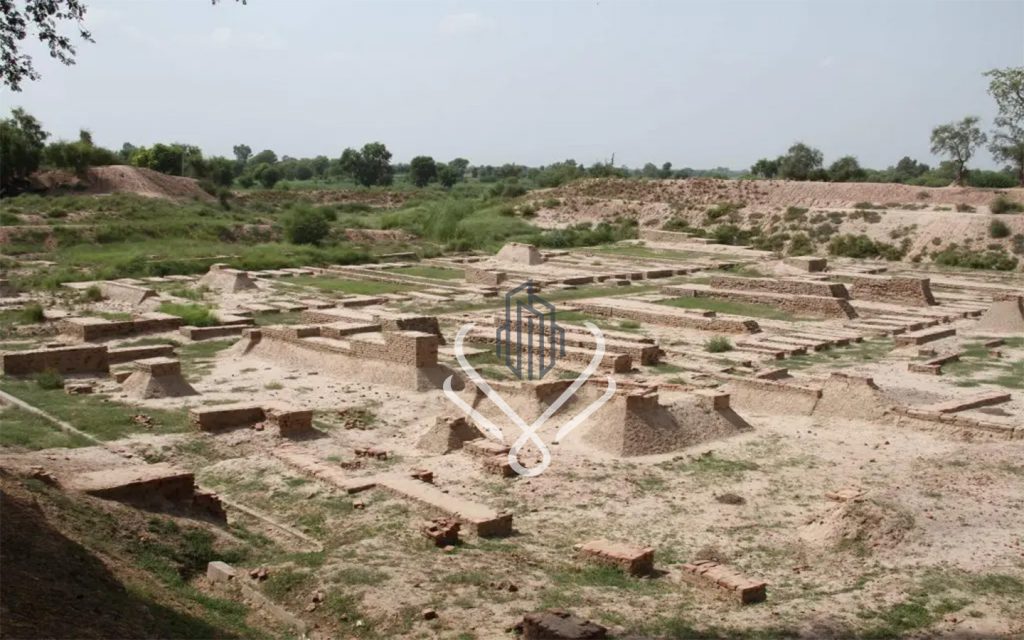
Cultures such as Mehrgarh, which flourished around 6000 B.C., are the forerunners of the Harappan Civilization. In 2600 BC, Harappa and Mohenjo Daro sprang up in the Indus Valley.
Harappa was home to a highly advanced culture at the time. They possessed a written language, urban centers, and a complex economic and social structure of their own. The Harappans engaged in commerce with the civilization of ancient Mesopotamia. The most common commodities were cotton textiles and agricultural goods. Stay at one of Pakistan’s many comfortable 3- and 4-star hotels during your trip.
8. Lahore Fort
The walled city of Lahore is home to the Lahore Fort, commonly known as the Shahi Qila or Royal Fort. It’s a popular stop for visitors to Lahore. Twenty hectares of land are devoted to the fort. Twenty-one structures from the time of Akbar can also be found within the fort’s walls.
The fort underwent further renovations under subsequent emperors. Shah Jahan embellished the fort with floral motifs and priceless marble. The impressive Alamgiri Gate was constructed by Aurangzeb. The defense was the official palace of Ranjit Singh, the first emperor of the Sikh Empire, during the time it was based in Lahore.

The fort’s “outstanding repertoire” of Mughal architecture led to its induction into the UNESCO World Heritage List in 1981. In addition, the Sheesh Mahal in the Shah Burj Block is a well-known landmark.
9. Takht-i-Bahi
Located in Mardan, Khyber-Pakhtunkhwa, Pakistan, the Indo-Parthian archaeological site of Takht-i-Bahi is also known as the Throne of Water Springs. There’s a lot to do in the city, but this is one of the most impressive Buddhist relics in all of Gandhara, and you shouldn’t miss it.
The Buddhists started using the monastery about the 1st century CE, and they kept using it until the 7th century. In 1980, UNESCO recognized Takht-i-Bahi as a World Heritage Site.

The Stupa Court, a collection of stupas in a courtyard, is the first of the four main sections of the Takht Bahi complex. The second section houses the monks’ living quarters: private cells clustered around a central courtyard, along with common spaces for prayer and meals. Then there is a stupa-filled temple complex reminiscent of the Stupa Court. Last but not least, there is a network of cells thought to have been utilized for Tantric meditation that is small, gloomy, and has low openings known as a Tantric monastic complex.
10. Rohtas Fort
Near the city of Jhelum is Rohtas Fort, also known as Qila Rohtas. It was built in the 16th century, during Sher Shah Suri’s rule. One of the largest forts in the Indian subcontinent. The fort was thankfully never assaulted, so it still stands in all its magnificence.
As an outstanding example of the Muslim military architecture of Central and South Asia, Rohtas Fort was designated as a World Heritage Site by UNESCO in 1997. There are 68 bastion towers and 12 gates protecting the fortified region of Rohtas Fort, which is 70 hectares in size. The massive fort had enough room for 30,000 soldiers.

Do not miss this fort if you enjoy examining historic buildings and turrets. And if you’re tired of the hustle and bustle of city life, you can always take a trip to one of Pakistan’s well-known hill stations.
Conclusion
Pakistan’s rich history and diverse cultural heritage are reflected in its numerous historical sites, making it a dream destination for history enthusiasts. From the early Mughal architecture of Hiran Minar to the stunning Noor Mahal, the ancient city of Mohenjo Daro, the iconic Minar-e-Pakistan, and the impressive Rohtas Fort, each historical place tells a unique story of the country’s past. Taxila City, Katas Raj Temples, Harappa, Lahore Fort, and Takht-i-Bahi also contribute to the tapestry of Pakistan’s history and culture. These sites offer a glimpse into the civilizations and empires that have shaped the region over millennia, providing a fascinating journey through time.
FAQs (Frequently Asked Questions):
Q1. What are some must-visit historical places in Pakistan?
Hiran Minar, Noor Mahal, Mohenjo Daro, Minar-e-Pakistan, Taxila City, Katas Raj Temples, Harappa, Lahore Fort, Takht-i-Bahi, and Rohtas Fort are among the top historical sites.
Q2. What is the significance of Hiran Minar?
Hiran Minar is a Mughal-era complex in Sheikhupura, built in memory of Emperor Jahangir’s pet antelope. It features impressive minarets, a large pool, and a pavilion.
Q3. What makes Mohenjo Daro important?
Mohenjo Daro is an ancient archaeological site dating back to 2500 BC. It offers insights into one of the oldest settlements in the Indus Valley civilization.
Q4. Why is Minar-e-Pakistan notable?
Minar-e-Pakistan is a national landmark where the Lahore Resolution was adopted in 1940. Its unique Islamic architecture and historical significance attract visitors.
Q5. What is special about Lahore Fort?
Lahore Fort, also known as Shahi Qila, showcases Mughal architecture and history. It includes structures from Akbar’s time and features the renowned Sheesh Mahal.
Q6. Why visit Rohtas Fort?
Rohtas Fort, built during the rule of Sher Shah Suri, is an impressive example of Muslim military architecture. It’s a UNESCO World Heritage Site with 68 Bastion towers.
Q7. Tell me about Takht-i-Bahi.
Takht-i-Bahi is an Indo-Parthian archaeological site in Khyber-Pakhtunkhwa, showcasing Buddhist relics. It includes stupas, temples, and living quarters.
Q8. What can I expect to see at Katas Raj Temples?
Katas Raj Temples is a collection of historic Hindu temples connected by pedestrian bridges. The site holds legends about Lord Shiva and is located near Kallar Kahar.
Q9. What is the historical significance of Taxila City?
Taxila, known as the “City of Cut Stone,” has ruins from various ancient empires, including the Achaemenid, Mauryan, Indo-Greek, Indo-Scythian, and Kushan Empires.
Q10. Why is Harappa famous?
Harappa, an archaeological site in Punjab, is a remnant of the Harappan Civilization. It offers insights into an advanced ancient culture with urban centers and trade.
Our Featured Article:
Read More: Promoting Pakistan’s Tourism Potential and Economical Impact
Read More: Tourism in Pakistan: A Guide to the Provinces and Attractions
Don’t miss the chance to invest with Lakeshore! Secure your investment today by investing your financial investment with Lakeshore in the following available options like Lakeshore City, Lakeshore Club, and Lakeshore Farms.
For More updates, please Contact +92 335 7775253 or visit our website https://lakeshorecity.com/
Lakeshore City is the upcoming elite lifestyle at Khanpur Dam. Offering no parallel amenities for the members and owners of distinguished farmhouses.
Become Part of Luxurious Lifestyle
Contact: 0335 7775253


